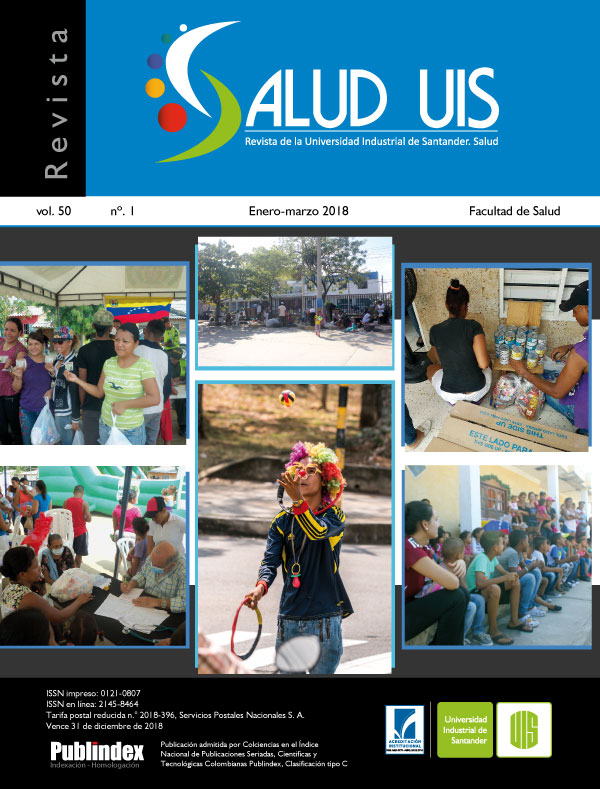Abstract
Introduction: Preventable failures in the drug chain are related to Drugs Problems Related Use and are associated with medication errors (prescription, dispensing, administration or use by the patient or caregiver), including failures In the Medication Supply System (availability and quality). Objective: Recognize basic information of the Pharmaceutical Establishments (PE), to characterize some processes related to the use of controlled drugs (CD), including compliance with the regulations, and determine the level of risk perception and the continuing education needs of the staff pharmacy. Methodology: A cross-sectional, epidemiological study was performed. A questionnaire was used on the processes focused on the use of CD, between May to September of 2016. Results: 700 PE were visited and an equal number of staff pharmacy were interviewed. Eighty-eight percent (617) of PE are socioeconomic low and medium status, and have an average of 15.3 years of operation (SD 13.6 years). The most favored CD were: mitriptyline 91.4% (640), tramadol 90% (630) and trazodone 60% (419). 76.6% (536) of the respondents considered that the Pharmacy Technician is the most suitable personnel to dispense CD. 25% (177) of the respondents perceived as very poor to regulate the process of information and education that they provide, and 32% (223) with equal perception in the responsibility that they have with the use and results in patients’ health. Conclusions: It identifies the general information of PE, as well as of processes related to the use of CD. The perception of respondents about the SP that is suitable for the correct dispensing of CD may be inadequate. A high percentage of the SP perceives educational failures focused on the correct use of CD.
References
2. Consejo Nacional de Política Económica y Social, Departamento Nacional de Planeación, República de Colombia. Politica Farmaceutica Nacional Documento Compes Social 155. Conpes Soc Cons Nac política económica y Soc. 2012; 33.
3. República de Colombia. Ministerio de Protección Social. Decreto 2200 de 2005. Reglamentación del servicio farmacéutico y se dictan otras disposiciones. 2005. p. 1-15.
4. Colegio Nacional de Químicos Farmacéuticos – Servicio Nacional de Aprendizaje, SENA. Caracterización ocupacional del sector farmacéutico en Colombia, enfoque por entornos. Servicio Nacional de Aprendizaje - SENA; 2008.
5. International Medical Statistics, IMS.
6. Amau LJ. Principios de Epidemiología del Medicamento. Cap. 3. Promoción del Uso Racional de Medicamentos y Preparación de Guías Clínicas. Segunda ed. Barcelona; 1993.
7. Organización Mundial de la Salud, OMS. Declaración de Tokio. El papel del farmacéutico en el sistema de atención de salud. Informe de la reunión de la OMS Tokio, Japón, 31 de agosto al 3 de septiembre de 1993. Buenas prácticas de farmacia: normas de calidad de servicios farmacéuticos.
8. Organización Mundial de la Salud, Federación Farmacéutica Internacional. OMS/FIP. Directrices Conjuntas FIP/OMS sobre Buenas Prácticas en Farmacia: Estándares para la calidad de los servicios farmacéuticos. 2011.
9. Otero MJ, Martín R, Santos B, Puigventós F. Farmacia hospitalaria: órgano oficial de expresión científica de la Sociedad Española de Farmacia Hospitalaria. Farmacia Hospitalaria. Ed. Garsi; 264-270 p.
10. About Medication Errors | NCC MERP.
11. Farcas A, Sinpetrean A, Mogosan C, Palage M, Vostinaru O, Bojita M, et al. Adverse drug reactions detected by stimulated spontaneous reporting in an internal medicine department in Romania. Eur J Intern Med. 2010; 21(5): 453-457. DOI: 10.1016/j.ejim.2010.05.014.
12. Wu T-Y, Jen M-H, Bottle A, Molokhia M, Aylin P, Bell D, et al. Ten-year trends in hospital admissions for adverse drug reactions in England 1999-2009. J R Soc Med. 2010; 103(6): 239-250. DOI: 10.1258/jrsm.2010.100113.
13. Organización Mundial de la Salud, OMS. Garantizando el equilibrio en las políticas nacionales sobre sustancias fiscalizadas. 2012.
14. República de Colombia. Ministerio de ambiente vivienida y desarrollo terrritorial. Resolución 1478. 2006.
15. Organización Mundial de la Salud, OMS. Informe 34. Comité de expertos en farmacodependencia. 2004.
16. Office of applied studies substances abuse and menthal health services administration. National survey on drug use and health. 2013.
17. ISMP España. http://www.ismp-espana.org/documentos/view/39.
18. República de Colombia. Ministerio de salud. Decreto 1070. 1990.
19. Área Metropolitana. http://www.metropol.gov.co/institucional/Paginas/IndicadoresGestion.aspx.
20. Arroyave O, Álvarez W, Amariles P, Vásquez M, Cardona B. Pertinencia laboral y social del programa de Tecnología en Regencia de Farmacia en la región de Urabá. Rev Univ Ind Santander Salud. 2016; 48(4): 526-534. DOI: http://dx.doi.org/10.18273/revsal.v48n4-2016011.
21. Pharmacy education taskforce a global competency framework. Federation International Pharmaceutical FIP. 2012.
22. Vacca C, Orozco J, Figueras A, Capellà D. Assessment of risks related to medicine dispensing by nonprofessionals in Colombia: clinical case simulations. Ann Pharmacother. 2005; 39(3): 527-532.
23. Ceballos JM, Amariles P. Needs and opportunities for outpatient pharmacies in Colombia: the case of continuing education programs for pharmacists. Rev Vitae. 2017; 24(1): 9-11.
24. Consejo General de Colegios, Oficiales de Farmacéuticos. Grupo de Trabajo de Buenas Prácticas. Servicio de Dispensación de medicamentos y productos sanitarios. Buenas
Prácticas en Farmacia Comunitaria en España. 2014.
25. Ifarma. Desarrollo de los servicios farmacéuticos en Colombia: Las empresas de gestión de servicios farmacéuticos. 2013.
26. Vacca CP, Niño CY, Reveiz L. Restriction of antibiotic sales in pharmacies in Bogotá, Colombia: a descriptive study. Rev Panam Salud Pública. 2011; 30(6): 586-591.
Se autoriza la reproducción total o parcial de la obra para fines educativos, siempre y cuando se cite la fuente.
Esta obra está bajo una Licencia Creative Commons Atribución 4.0 Pública Internacional.
